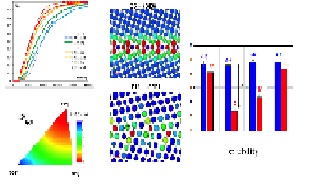
Xavier Feaugas
University of La Rochelle, France
Title: Hydrogen diffusion in nickel single- and poly-crystals: the effects of self-stress
Biography
Biography: Xavier Feaugas
Abstract
Hydrogen diffusion and trapping has an important role in solute-dependent hydrogen embrittlement in metals and metallic alloys. In spite of extensive studies, the complexity of hydrogen diffusion in solids remains a phenomenon that needs to be clarified. The effects of the grain boundaries (GBs), and several defects (dislocations, vacancies …) and their interactions with hydrogen on the mechanisms of metal damages remain a controversy. Actually, several works suggest that the grain boundaries represent preferential paths for hydrogen diffusion, and this kind of hydrogen diffusion along GBs is higher than the interstitial diffusion. However, grains and GBs contain different defects, particularly, dislocations and vacancies. These defects are able to trap hydrogen affecting the diffusion mechanisms. Although a number of theories have been proposed to describe the role of GBs for hydrogen diffusion and segregation, none of them is able to give an exact answer. In present work we report our recent works [1-5], which support the investigation of diffusion in pure nickel single crystals and poly-crystals using both an experimental approach and a thermodynamic development. We have studied at the first time some nickel single crystals. We evaluate the hydrogen diffusion and trapping mechanisms using the electrochemical permeation (EP) coupled to the thermal desorption spectroscopy (TDS). Later, we propose to screen several bi-crystals of pure nickel with different grain boundaries. For each ones, the hydrogen diffusion and segregation are studied using EP and TDS analyses. In addition, Molecular Dynamics (MD) simulations have become a useful method to comprehend the becoming of hydrogen in these types of GBs. The results allow us to associate the short-circuit diffusion and trapping phenomena to the grain boundaries and defect characters (excess volume, defects density and distribution …). In each situation, we highlight the importance of the self-stress on the processes of diffusion and segregation.


